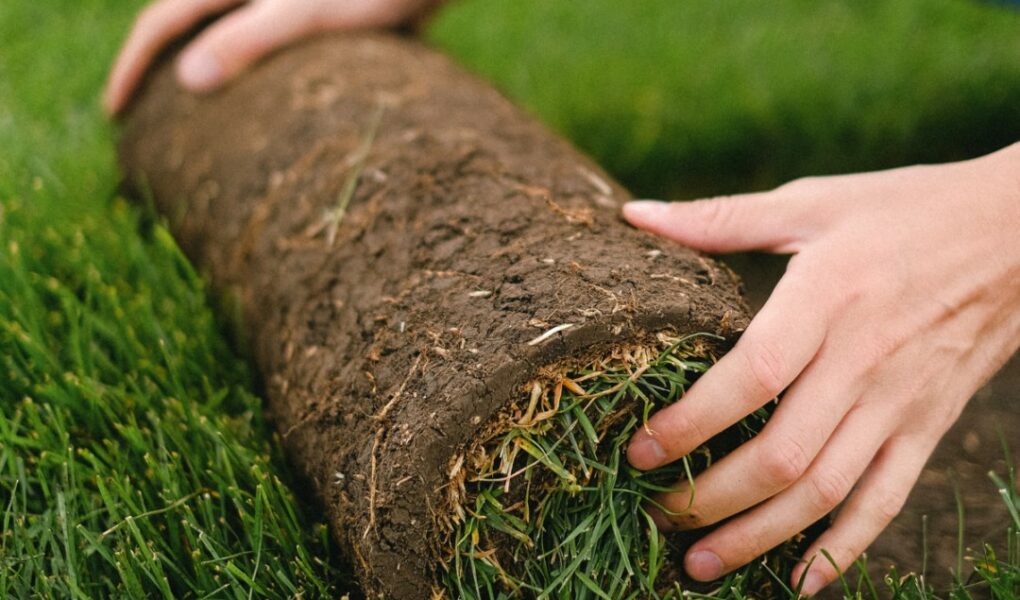Turfgrass sod, better known as grass sod, is used both for landscaping, sports grounds, and residential lawns. Apart from its aesthetic appeal, this adaptable material helps improve air quality, erosion management, and environmental sustainability. In this intricate tutorial, we will discuss grass sod’s many benefits for landscapes and ecosystems. Grass Sod Alexandria is a sustainable land management technique that prevents soil erosion and locks in carbon. Let’s meet and see the advantages this environmental resource gives to both people and the ecosystem.
1. Soil conservation erosion control
Grass Sod Alexandria is instrumental in soil conservation and is, therefore, helpful in land conservation. The widespread root system of grass plants helps keep the soil intact against water and wind erosion. Grass sod fixes soil and stops sediments from flowing on hills, construction sites, and in rivers. The conservation of topsoil and clearing of rivers, lakes, and streams of sediment ensures better water quality. This is because the grass sod prevents soil erosion, enables agricultural land to supply food to future generations.
2. Improved Water Management
By minimizing surface runoff and boosting infiltration, grass sod helps manage water. Unlike concrete or asphalt, grass sod absorbs precipitation, recharging groundwater and reducing stormwater runoff. This natural filtration mechanism decreases soil compaction, floods, and water pollution. In metropolitan settings with impervious surfaces, grass sod in parks and green spaces helps reduce stormwater drainage and the urban heat island effect. Rainwater absorption and storage by grass sod promotes sustainable water resource management and climate resilience.
3. Air Quality Improvement and Carbon Sequestration
Photosynthesis in grass sod stores atmospheric carbon dioxide in plant tissues and soil organic materials. Carbon sequestration reduces greenhouse gas emissions and boosts soil fertility and production. Land managers may optimize grass sod’s carbon storage capability to offset human carbon emissions and contribute to the global carbon cycle by maintaining healthy grasslands and lawns. Due to its ability to trap dust, pollen, and particle matter, grass sod improves air quality. Grass leaf blades filter pollutants, improving respiratory health and well-being.
4. Conservation of Biodiversity
Many insects, birds, small animals, and reptiles live and eat on grass sod. Healthy grasslands promote biodiversity and environmental resilience by supporting diverse ecological groups. Land managers may maintain native plant and animal species, threatened ecosystems, and landscape ecology by protecting and restoring grassland environments. Native grass species are suited to local circumstances and offer critical supplies for native animals. Therefore using them in grass sod manufacturing may help conserve biodiversity.
5. Recreational and aesthetic
Besides its ecological advantages, grass sod enhances outdoor areas with its recreational and aesthetic appeal. In parks, golf courses, sporting fields, and residential lawns, grass sod creates a beautiful green carpet for leisure and socializing. Soft texture and toughness make it excellent for picnics, games, and outdoor activities, while its brilliant color and consistent look enhance landscapes. Lawn sod also boosts property values and curb appeal, making it a popular option for homeowners and landscape architects. With appropriate care, grass sod can turn ordinary landscapes into bright and appealing outdoor spaces, benefiting people and communities.
Conclusion
Grass Sod Alexandria is a sustainable and versatile answer to many land management issues beyond its visual appeal. From soil protection and erosion management to carbon sequestration and biodiversity conservation, grass sod helps the environment. Its potential to improve water management, air quality, leisure, and aesthetics makes it important for all settings. Grass sod may improve land management and build healthier, more sustainable landscapes for future generations.




